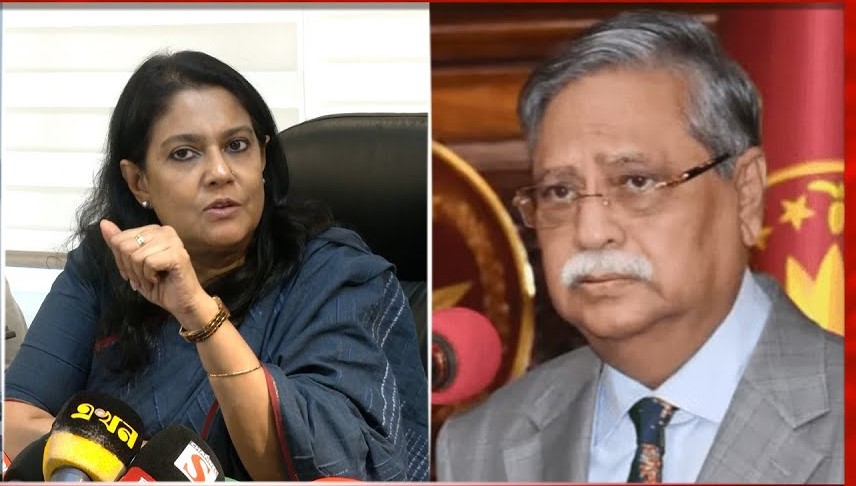The removal of President Mohammad Shahabuddin’s portrait from the foreign missions didn’t come out of the blue. It was related to the recent visit of Syeda Rizwana Hasan, adviser for environment, forest, climate change, and water resources to Geneva.
During her visit to Switzerland last week for an international conference, Rizwana noticed that the portrait of President Shahabuddin was still hanging at the Geneva mission, despite prior verbal instructions to take it down. Surprised by this, Rizwana inquired about the situation from the mission officials, but they were unable to provide a clear answer. Following this, the portrait was removed.
Subsequently, other missions began following suits and taking down the portrait. The foreign ministry then issued a fresh directive to remove the president’s portrait, and most of the missions responded immediately.
The decision to remove portraits of the head of state, government, and others, both at home and abroad, was part of the Zero Portrait Policy taken by the government led by Professor Muhammad Yunus after it assumed office in early August 2024. This policy also applies to the portraits of Yunus himself.
A government order was subsequently issued to remove the portrait of former Prime Minister Sheikh Hasina, who was ousted following the student-led mass uprising on August 5, 2024. The directive was swiftly implemented.
According to informal instructions, the portraits of Hasina and her father, Sheikh Mujibur Rahman, the founding president of Bangladesh, were also removed from government offices, foreign ministry officials said.
Under Hasina’s autocratic rule, displaying portraits of Sheikh Mujib at government offices, both domestic and foreign, was a constitutional requirement. It was also customary to display photos of the sitting president and prime minister. However, with the new administration, this tradition has been put to rest.
Officials of the foreign ministry, the press wing members of Yunus and the foreign missions remained tight-lipped about removing the portraits of Shahabuddin.
But they confirmed that Shahabuddin’s portrait that remained on display at the ministry’s cafeteria until Sunday afternoon was taken down later at night.
On the other hand, some offices displayed photos of chief adviser Yunus although the new policy prohibits it.
Additionally, some offices have continued to display photos of Chief Adviser Yunus, despite the new policy barring it.


